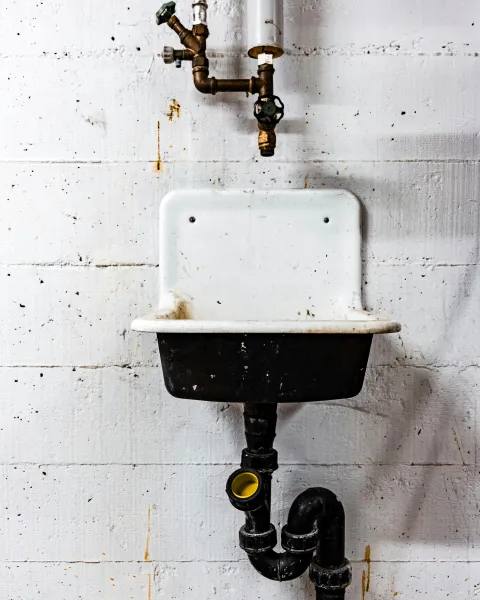July 26, 2024
California declared 'clean water for all' as a basic human right, but that promise isn't a reality for many rural areas

Aging systems can contribute to contaminated water. (Photo by Daniel Fazio, Unsplash)
California declared clean drinking water a human right in 2012, but that promise remains a work in progress as residents in more rural or underserved counties still drink contaminated water, reports Ian James of the Los Angeles Times. "Approximately 913,000 Californians depended on public water systems that are failing to comply with drinking water regulations, while an additional 1.5 million people depended on water systems that are determined to be 'at-risk.'" The price tag for clean, affordable water "for all" rings in at $15.9 billion.
Risky water tends to be poured from taps in small, more rural communities. Joaquin Esquivel, chair of the state water board, told James, "What our analysis has shown time and again is that the common denominator is size. Small systems struggle, especially in communities that have experienced discrimination and disinvestment, and their challenges will be amplified as the weather grows more extreme, new contaminants emerge and costs increase.”
The contaminated water some rural Californians are using, many Americans might rightfully refuse to drink. "The water pumped from wells contains harmful levels of contaminants including naturally occurring arsenic, bacteria from sewage leaks, nitrate from animal manure, fertilizers or other sources, and carcinogenic chemicals," James explains. Many water systems "have at least one contaminant at levels that violate safe drinking water standards."
Getting regional water systems in line with safe drinking standards takes more than funding. It takes people and planning. "The estimated costs of solutions in the latest report were substantially higher than previous state estimates," James writes. "According to the report, the estimated costs of long-term solutions for failing and at-risk public water systems total $6.6 billion over five years, while the costs of solutions for 'high-risk' small water systems and domestic wells total $4.9 billion."
But those numbers don't include everything. James explains, "Those combined costs, totaling more than $11.5 billion, would be significantly higher if loan repayment costs and operations and maintenance costs are included, the report said, pushing the total estimated cost of 'achieving the human right to water' to $15.9 billion."
It's a total California may not be prepared to pay. James adds, "Officials projected that $2 billion in state grant funds will be available over five years, as well as $1.5 billion in state loans, leaving a substantial gap in available funding."